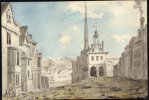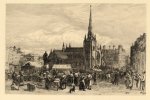S
-
Welcome to this forum . We are a worldwide group with a common interest in Birmingham and its history. While here, please follow a few simple rules. We ask that you respect other members, thank those who have helped you and please keep your contributions on-topic with the thread.
We do hope you enjoy your visit. BHF Admin Team -
HI folks the server that hosts the site completely died including the Hdd's and backups.
Luckily i create an offsite backup once a week! this has now been restored so we have lost a few days posts.
im still fixing things at the moment so bear with me and im still working on all images 90% are fine the others im working on now
we are now using a backup solution
You are using an out of date browser. It may not display this or other websites correctly.
You should upgrade or use an alternative browser.
You should upgrade or use an alternative browser.
Bull Ring until 1920s
- Thread starter mikejee
- Start date
S
Stitcher
Guest
S
Stitcher
Guest
S
Stitcher
Guest
Radiorails
master brummie
The bus looks rather like a Midland Red one of 1919. Most of the people seem to be looking at the bus, suggesting the bus might be there for a specific route avoiding the greater number of waiting passengers as it is parked away from the kerb (not unusual in the Bull Ring). The crowds could well be awaiting buses to take them to Stratford upon Avon maybe it was a Bank Holiday? The curious think is that there seems to be quite a few queues or groups, some to the left others to the right. However, considering Stratford upon Avon I would add that Moor Street GW railway station was nearby and they conveed many to Stratford upon Avon on Bank Holidays: I did the journey by train a few times, usually from Shirley or Wythall (Grimes Hill).
I wondered if it was a special charter bring someone to the city, hence the crowds, but the bus does have a destination board which could rule out that line of thought.
Maybe there will be some other more definite information and not become one of our 'loose ends'.
I wondered if it was a special charter bring someone to the city, hence the crowds, but the bus does have a destination board which could rule out that line of thought.
Maybe there will be some other more definite information and not become one of our 'loose ends'.
Dennis Williams
Gone but not forgotten
Radiorails
master brummie
There is a thread about old prints/paintings of the Bull Ring:
 birminghamhistory.co.uk
birminghamhistory.co.uk
Also some interesting old Bull Ring photos and details here?
 birminghamhistory.co.uk
birminghamhistory.co.uk
Old Bull Ring painting
This is a painting of the old Bull Ring, late 18th century, based on an etching uploaded by Phil recently, thankyou Phil. Eric
 birminghamhistory.co.uk
birminghamhistory.co.uk
Also some interesting old Bull Ring photos and details here?
Bull Ring until 1920s
I don't think this has been on the forum before, but of course I may be wrong. It is entitled Market Morning Birmingham 1876
 birminghamhistory.co.uk
birminghamhistory.co.uk
Dennis Williams
Gone but not forgotten
Re C.Green & Son, here is a whistle sold by them soon after 1895. It was made by Hudson & Co and is possibly the only whistle sold by a shop based on the Bull Ring.Hi guys if you are interested in the life of the bull ring and its formation going back to the 1700.s
And how it formed may I suggest you buy the book by victor , j Pryce its called
The bull ring remembered its starts from the early days of the old area as it was with the building of the oriniginal bull ring
With maps and listing of pubs and and pictures and the parishes and the abbitairs
There was twenty five pubs in all with there named changed and of the old streets before changing and of the slum clearance to make way for a bull ring
In the 1600 s and most of the pubs of the twenty five have gone but there is still one or two left from that era. Today and listing of pub owners far back in the 1800 s
There are names of people whom was first to by a bussineess with in the bull ring
One was Mr c, green, and sons, no, 10 bullring,openened by Cornelius green
in 1895. And closed in 1934 they had a assistant
Fred tullett,this shop opened in the 19 the century and was there for many years
They specialized in leather goods, boxing gloves , footballs, purses , cases for travelling, all were made on the premises
One year Mr green made a 6 ft high leather foot ball , and the police borrowed. This for there their sports day in Aston park
Police on horse back played football with it
At the rear of the premises was a court yard , known as golden court, it had 4 cottages and a lodging house called pump lodgings
This was run by a Mr Davis , he used to take in tramps and charged them 2 pence per night ,
In those days they were gentlemen and whom could be trusted, in the centre of the court yard was a a water pump,
One of many errected in the area for the supply of water,
In his younger days, sir Adrian Cedric boult,the well known musician. ,rented a room in the court yard to practice,
He was the founder. Of the.BBC symphony orchestra. 1930. To 1950. He was born in 1889 and died in 1983
There was interesting aspect of these premises is,that under the premises, leading off the cellar was a tunnel leading to st martins church
It is not known why this tunnel was originally built but,it could have been an escape route from the churches,
Just like Aston hall the story of Aston parish church tunnel excistances how many more possible church tunnels exist
I have heard the story of the one in st Paul's in the st Paul's square and there drawing on the wall under ground from the moastry to across to the church tunnel
I sincerelyreomend this book of the bull ring remembered and its written by victor , j , Pryce and incidently there is a picture of him in it in is choir out fit
Best wishes astonian,,,,,,,
Attachments
It's good to see the old shoe shop in the photo .the photo must of been taken between 1875 (that's when the company started) Freeman hardy & Willis then changed it's name to Freeman Hardy Willis in 1929 and before anyone queries the dates I got all the information off wikipedia.
Matthew Jones only appears there in the 1883 directory ( which would refer to 1882) and not in 1882 or 1884. This is somewhat surprising considering the elaborate coat of arms above the shop., though I suppose these may have referred to the auction rooms above
I like this view as it shows the extent of the stall holder pitches in the outdoor market. Looks pretty busy too. The public conveniences are still there and you can almost read the stall holder names on the canvass awnings.
What are the men in white jackets bottom right ? Ice cream vendors ?
You get a good impression of Birmingham perched on the hill too. Sorry but don’t have a date for this (1910ish ?). Viv.

What are the men in white jackets bottom right ? Ice cream vendors ?
You get a good impression of Birmingham perched on the hill too. Sorry but don’t have a date for this (1910ish ?). Viv.

Lady Penelope
master brummie
Hi Viv, your post is from 2013 but I've just been looking through this great thread and found it. I feel sure that this picture comes from a set of postcards entitled 'Birmingham by Night' which I posted on the forum not long after I joined (unfortunately I can't remember where I posted them). All I need to do is find the PC's and see if there is an artist named. They weren't posted so there'll be no postmark. They were bought as a set many years agoI love this painting of the Bull Ring. Old Market Hall to the right, St. Martin's straight head. I can almost smell the chestnuts roasting somewhere down there! To me this picture has great atmosphere. Don't know the date or artist, looks about 1920s maybe? Or possibly even later. Viv.
View attachment 84641
Last edited:
Radiorails
master brummie
Great Onion Fair picture - not a sign of bicycles or beret's. 
It's noticeable that the onions are small onions. Where would we be without onions ? I believe they're one of the essentials in any kitchen. Looks like Brummies of the late 1800s thought so too. Viv.
Lady Penelope
master brummie
I thought they looked more like strings of garlic than onions. They seem a different shape to today's onions.
Richard Dye
master brummie
Wonderful picture Mike!I don't think this has been on the forum before, but of course I may be wrong. It is entitled Market Morning Birmingham 1876

Richard Dye
master brummie
I remember that hill (not that old) so very well! Cobble stones in the rain on a bike...........An absolute "corker"!!, stitcher, and your right I would't think many had seen that photo before.
paul
cookie273uk
master brummie
I don't think post 162 is a painting, its to perfect, particularly the figures, I would say its a photograph. Could be wrong of course. Eric
This image in the Birmingham Museums Trust Collection is dated 1845. I don’t see how it can be. There appears to be no Market Hall (built in the 1830s). Perhaps this was a drawing created in the 1840s depicting an earlier time in the 1830s ? Viv.

Link to the Trust image here http://dams.birminghammuseums.org.u...id=12281&index=4&total=15&view=viewSearchItem

Link to the Trust image here http://dams.birminghammuseums.org.u...id=12281&index=4&total=15&view=viewSearchItem
Last edited:
cabbagecaff
New Member
Golden Court is featured on this map...At number 10 Bull Ring Cornelius Green's leather goods shop survived until the mid 1930's. (I can't work out where exactly number 10 was.) At the back of it was Golden Court with small houses and Pump Lodgings, named after the hand pump in the centre of the court. (Golden Court was where Sir Adrian Boult of BBC Symphony Orchestra fame rented a rehearsal room.)
The buildings were apparently located at the other end of an underground walkway that led directly into the church. Does anyone know anything about 'St Martins underground'?
My Dad told me about the tunnel and either it was widley known about at the time, or he picked it up from his father who had worked on plumbing in the area.















